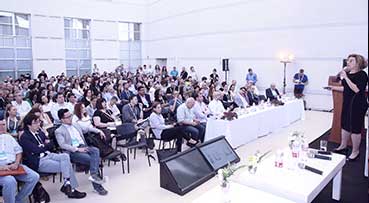It’s official – hybrid work is here to stay. The Flex Index, introduced in Q1 2023, systematically gathers data on evolving work arrangements. The Q2 2024 Flex Report includes insights from about 9,000 organizations worldwide, representing around 100 million employees across 22 industries. The verdict is clear – hybrid work isn’t just a trend; it’s the new norm in the workplace.
The index classifies organizations into three categories based on their flexible work policies:
– 32% Fully Flexible: Organizations without physical offices, where employees work entirely remotely, or those that allow complete freedom for employees to choose if and when they come to the office.
– 37% Structured Flexibility: Organizations with hybrid work policies, including set office days or minimum attendance requirements.
– 31% Full Time In Office.
When the measurement began, organizations were evenly split between flexible work and full office attendance. Today, only 31% of companies require full-time office presence for jobs that can be done remotely, a significant drop from 50%. This trend aligns with Gallup data in the US, which also shows a steady increase in hybrid work arrangements, with only 20% of employees who could work hybrid being required to work exclusively from the office.
This shift towards flexibility underscores a broader trend: employees are demanding – and receiving – more control over their work environment. Organizations have adapted to the non-negotiable preferences of employees and candidates voting with their feet. For instance, Gallup data shows that a third of hybrid workers would look for another job if their conditions changed, a statistic echoed in various studies during this period. In the UK, around 2 million people changed jobs last year due to a lack of flexibility, and about 4 million switched careers to enhance their flexible work opportunities.
Take, for example, a teacher—a profession historically seen as allowing work-life balance due to aligning work hours with family needs. Today, teaching is much less flexible compared to roles that enable hybrid work, allowing part of the week to be spent working from home and adjusting work hours to personal needs. This is indeed happening. According to the Q2 2024 Flex Report, the average office attendance requirement is 2.49 days per week. However, this number is misleading. The reality is polarized: 32% of organizations offer full flexibility, while 31% offer none. In the middle, 37% provide structured flexibility, mostly with hybrid policies requiring two to three office days a week without specifying which days.
From newspaper headlines, it sometimes seems like big companies are leading the “back to office” movement. However, the data shows the opposite. From the first index in early 2023 to today, across five quarters, flexible work is the norm wherever possible, regardless of organization size. The percentage of fully remote organizations remains unchanged, mostly comprising those with fewer than 500 employees. Surprisingly, larger organizations, those with over 25,000 employees, predominantly operate hybrid or remote, with only 18% requiring full office attendance. Among hybrid-working organizations, only 2% require four office days per week, meaning 98% allow one to three office days.
The Big Shift: Not Just in Tech
This trend isn’t limited to tech industries. Now, 90% or more of organizations in communications, finance, and insurance offer flexibility, with a significant rise in flexible work policies in finance and insurance sectors in recent months. This shift came through employee power, despite management statements against remote work. Remember mid-2021, when financial centers in the US and UK began reopening after a year of the pandemic? Many companies in these industries made it clear that remote work wouldn’t remain an option. Goldman Sachs CEO David Solomon described remote work as an “aberration,” and Morgan Stanley CEO James Gorman declared that young employees wouldn’t thrive if remote work became the norm. Yet now, 90% of the industry works flexibly.
Even more interesting are the numbers in industries requiring physical presence, like food services, education, hospitality, retail, manufacturing, and logistics. They are also adopting hybrid models for roles that can work remotely, at least for their headquarters staff. In these industries, 40-50% of organizations offer hybrid work, indicating that flexibility is becoming a universal standard. Chains like Marks & Spencer, 7-Eleven, CVS, and brands like Adidas, Lululemon, H&M, and Pandora are examples of organizations allowing headquarters staff to work outside the office a few days a week. And no, most didn’t operate this way before 2020.
Flexible work represents a profound shift in the social contract between employees and employers. As the world adapts to rapid changes, it’s becoming clear that work is no longer a place we go, but something we do. The future belongs to those who recognize that employees value the ability to manage their work environment within the broader context of their lives. Organizations that embrace this new paradigm will attract and retain the best talent, driving innovation and success in the years to come.

![large-AX1A2125-2[1] large-AX1A2125-2[1]](https://niritcohen.com/wp-content/uploads/elementor/thumbs/large-AX1A2125-21-pnzedcs72atx5aeurqytqdiihxixlq02re9mlz805s.jpg)






